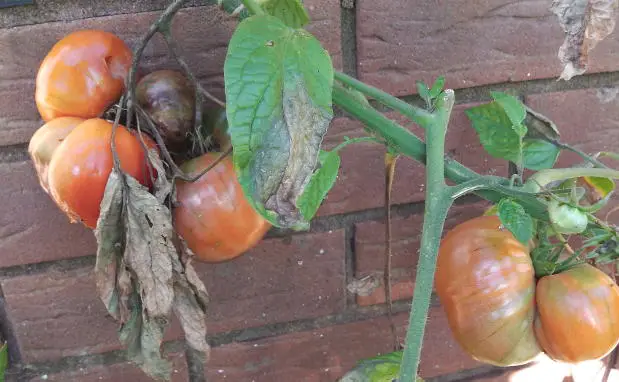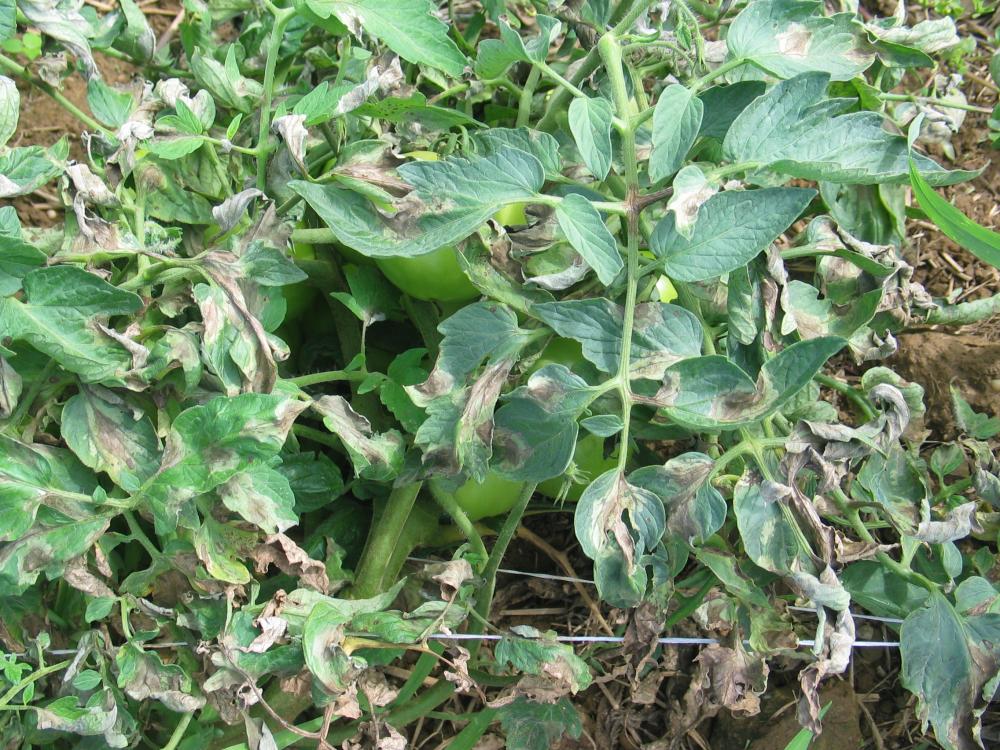Most of the emails I receive at this time of the season are about tomato problems. Strange marks on leaves, curling leaves and problems with the fruit are the main issues during August.
I have already received emails from tomato growers who have been affected by blight – some have been completely wiped out! So i thought this week I would discuss how to manage tomato blight.
There are three main disease categories:
- Bacterial – such as leaf speck/spot
- Viral – such as curley top, mainly outside the UK
- Fungal – such as blight, a big problem in wet summers
It’s not uncommon for leaves to show signs of bacterial speck or spot, virus’s are rare in the UK but fungal diseases are common and often destroy our plants and all the effort of a season comes to nought.
Blight has always been the biggest issue when it comes to growing tomatoes outdoors.

Blight control
We used to be able to control fungal diseases but owing to EU regulations, our chemical sprays and powders have been banned from use. A quick spray with Dithane or Bordeaux mixture at the end of July and beginning of August would give some protection through a wet week or so. The problem now is, some of us have had rain almost every day for two or three weeks, giving blight an opportunity to strike.
An interesting point to note is that blight fungal spores cannot infect dry leaves – damp or wet leaves, on the other hand, are very vulnerable.
What to do with affected plants
At the first sign of blight on leaves, remove affected leaves and leaf branches and destroy them or put them in the waste bin (not compost bin). Remember that the disease can be spread from plant to plant on hands, so remove leaf branches by pulling them off and not touching any other part of the plant.
Blades such as knives and scissors can also transfer disease from one plant to another. If you use a blade to remove a leaf branch, wipe it after with an anti-bacteral wipe or hand sanitiser on a tissue.
If blight has spread to the stem or fruit it is too late – the whole plant should be destroyed but unaffected fruit can be eaten. Cut through the middle of a tomato to find out.
Blight tolerant or blight resistant
A few seasons ago there was mention of some varieties, including Ferline, being blight tolerant. This blight tolerance is nothing like as strong as blight resistance – Ferline and other similar varieties are still exposed to blight when conditons are wet for a week or two.
In the photo below you can see how leaves are affected – the lowest on the plant are the most damaged because they have the least resistance at the beginning of the infection. The healthiest leaves are usually at the top of a plant because they get nutrient preference.

Late blight damage on leaves. Photo credits: Margaret T. McGrath, Cornell University.
More from Cornell University about blight and blight resisant varieties.
There are quite a few varieties available in the USA that have good resisance but for the UK, the three varieties below are the ones to grow if you regularly experience blight.
Here’s a photo of the damage done to one of my Brandywine plants taken yesterday (11-08-2017). Shrivelled leaves, brown stems and soft rotting fruit are typical signs of blight.

It is possible that greenhouse tomatoes may also become affected if conditons are damp and humid. Aeration is the key to preventing fungal diseases in enclosed spaces, so keep a window open.
How to avoid blight next season
There is only one way to avoid tomato blight next season if you grow outside, and that is to grow blight resistant varieties such as:
- Crimson Crush
- Mountain Magic
- Lizzano
Each of these varieties has been bred with a blight resistant gene (or two). Even then you may see some signs of blight on leaves but it won’t spread further.
It is possible to provide cover, such as a clear perspex roof, if you are growing tomatoes up against a wall or strong fence. Keeping the rain off of the leaves will help.
Some areas of the UK have been wetter than others – there is no way to predict the British weather!
I hope that where you live has been dryer than where I live – and your toms are fine.
Regards,
Nick
Quadrow Planter – Get 10% Off by entering WGNEW at checkout!
Crimson Crush Seeds – be blight resistant next season!

John Bowtell
Mountain Magic is a great variety, no sign of blight last year, heavy cropper but not as much flavour as some.
Nick
Hi John, I agree about the taste – a blight resistant Gardener’s Delight would be great!